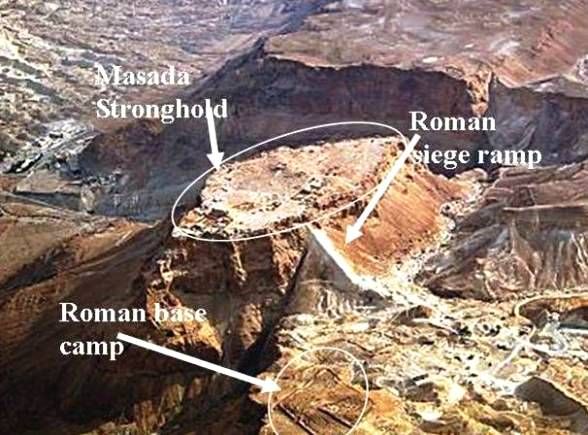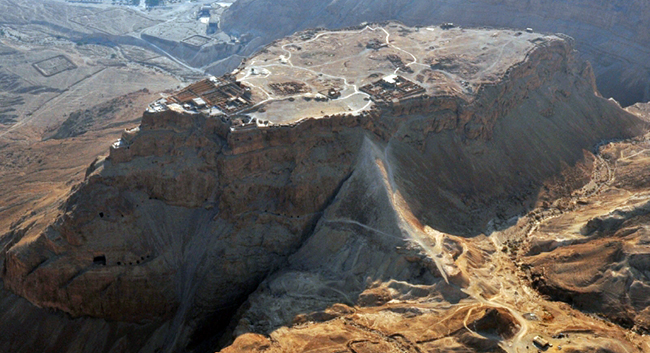- May 19, 2015
- 125,492
- 28,588
- 73
- Country
- United States
- Faith
- Christian
- Marital Status
- Single
- Politics
- US-Libertarian
Note Jesus is telling His followers what they will be looking forward to here.
Did they or some of them witness some of the early parts of the Jewish rebellion?
"Ye will hear of battles and rumors of battles" 1st century concluding in Judea/Jerusalem 70ad
Matthew 24:
6 “And you will hear of battles and rumors of battles. See that you are not troubled;
for all these things must come to pass,
but the end is not yet.
Mark 13:
7 “But when you hear of battles and rumors of battles, do not be troubled;
for such things must happen,
but the end is not yet.
Luke 21:
9 “But when you hear of battles and commotions/tumults, do not be terrified;
for these things must come to pass first,
but the end is not immediate.”
Revelation 7:14
And I said to him, “Sir, you know.” So he said to me,
“These are the ones who come out of the great tribulation, and washed their robes and made them white in the blood of the Lamb.
====================================
Could the 1st century Jewish wars be considered a great tribulation, especially the one that occurred in Judea and Jerusalem.........
Could the rebels shown in Dan 8 be symbolizing the Jewish Rebels of the 1st century ?
Daniel 8:23
“In the latter part of their reign, when rebels have become completely wicked, a fierce-looking king, a master of intrigue, will arise.
Ezekiel 20:38
“I will purge the rebels from among you, and those who transgress against Me; I will bring them out of the country where they dwell, but they shall not enter the land of Israel. Then you will know that I am the LORD.
Hosea 5:2
The rebels are knee-deep in slaughter. I will discipline all of them.
Visual Timeline of the Roman-Jewish War ARTchive @
"..probably the greatest single slaughter in ancient history."
CHRONOLOGY IMMEDIATELY SURROUNDING THE WAR
Just before the general Jewish Rebel Revolt:
Stage 1: Murder of James the Just, "Opposition High Priest" ; Irrevocable Split: 62
Start of the great tribulation?
Stage 2: General Revolt in Jerusalem ; Zealot Occupation of Masada: August-September 66
Stage 3: The Campaign of Cestius Gallus and the Defeat of the Twelfth Legion: October-November 66
Stage 4: End of Collaborative Government, Priesthood ; General Flight: November 66 - March 67
Part 6: Vespasian Subdues Northern and Western Palestine: December 66 - December 68
Part 7: Three-way Power Struggle within Jerusalem After Roman Retreat: January 68 - May 70
The final Wrath?
Luke 21:23
“But woe to those who are pregnant and to those who are nursing babies in those days!
For there will be Great Distress in the land and wrath upon this people.'
Part 8: Romans Breach City Walls and Leave Jerusalem Desolate: May 10 - September 10, 70
==============================
Fairly good vid on Josephus' historical account of that event:
The Destruction of Jerusalem - George Peter Holford, 1805AD
Did they or some of them witness some of the early parts of the Jewish rebellion?
"Ye will hear of battles and rumors of battles" 1st century concluding in Judea/Jerusalem 70ad
Matthew 24:
6 “And you will hear of battles and rumors of battles. See that you are not troubled;
for all these things must come to pass,
but the end is not yet.
Mark 13:
7 “But when you hear of battles and rumors of battles, do not be troubled;
for such things must happen,
but the end is not yet.
Luke 21:
9 “But when you hear of battles and commotions/tumults, do not be terrified;
for these things must come to pass first,
but the end is not immediate.”
Revelation 7:14
And I said to him, “Sir, you know.” So he said to me,
“These are the ones who come out of the great tribulation, and washed their robes and made them white in the blood of the Lamb.
====================================
Could the 1st century Jewish wars be considered a great tribulation, especially the one that occurred in Judea and Jerusalem.........
Could the rebels shown in Dan 8 be symbolizing the Jewish Rebels of the 1st century ?
Daniel 8:23
“In the latter part of their reign, when rebels have become completely wicked, a fierce-looking king, a master of intrigue, will arise.
Ezekiel 20:38
“I will purge the rebels from among you, and those who transgress against Me; I will bring them out of the country where they dwell, but they shall not enter the land of Israel. Then you will know that I am the LORD.
Hosea 5:2
The rebels are knee-deep in slaughter. I will discipline all of them.
Visual Timeline of the Roman-Jewish War ARTchive @
"..probably the greatest single slaughter in ancient history."
CHRONOLOGY IMMEDIATELY SURROUNDING THE WAR
Just before the general Jewish Rebel Revolt:
Stage 1: Murder of James the Just, "Opposition High Priest" ; Irrevocable Split: 62
Start of the great tribulation?
Stage 2: General Revolt in Jerusalem ; Zealot Occupation of Masada: August-September 66
Stage 3: The Campaign of Cestius Gallus and the Defeat of the Twelfth Legion: October-November 66
Stage 4: End of Collaborative Government, Priesthood ; General Flight: November 66 - March 67
Part 6: Vespasian Subdues Northern and Western Palestine: December 66 - December 68
Part 7: Three-way Power Struggle within Jerusalem After Roman Retreat: January 68 - May 70
The final Wrath?
Luke 21:23
“But woe to those who are pregnant and to those who are nursing babies in those days!
For there will be Great Distress in the land and wrath upon this people.'
Part 8: Romans Breach City Walls and Leave Jerusalem Desolate: May 10 - September 10, 70
==============================
Fairly good vid on Josephus' historical account of that event:
The Destruction of Jerusalem - George Peter Holford, 1805AD
Upvote
0


